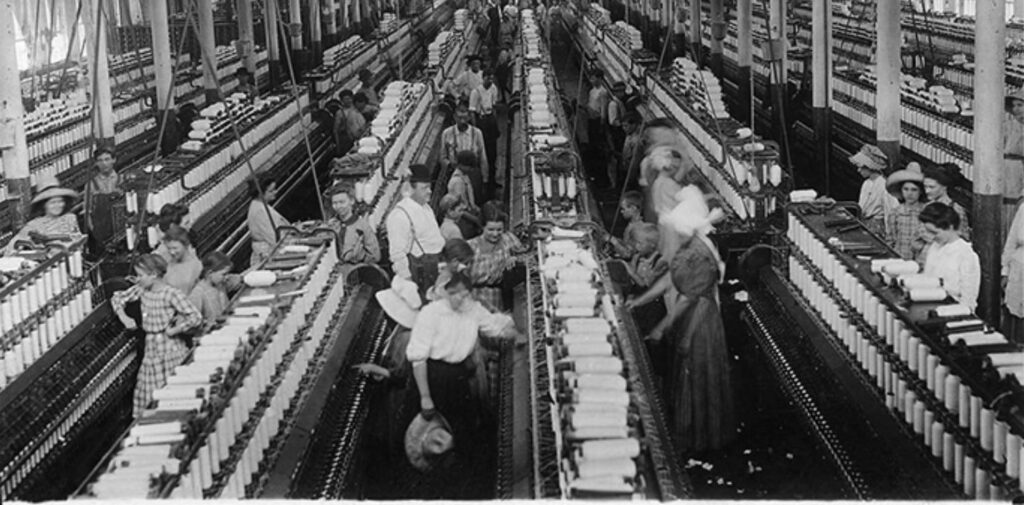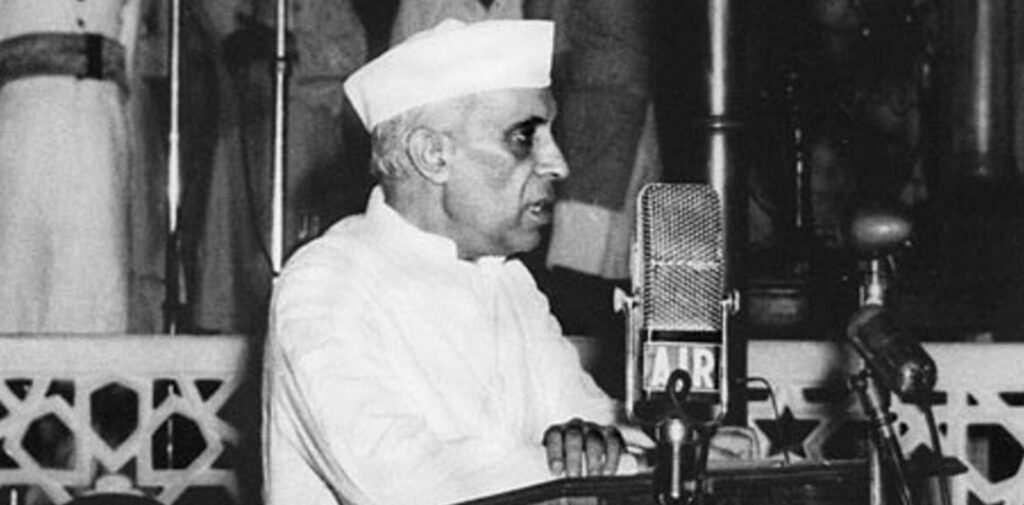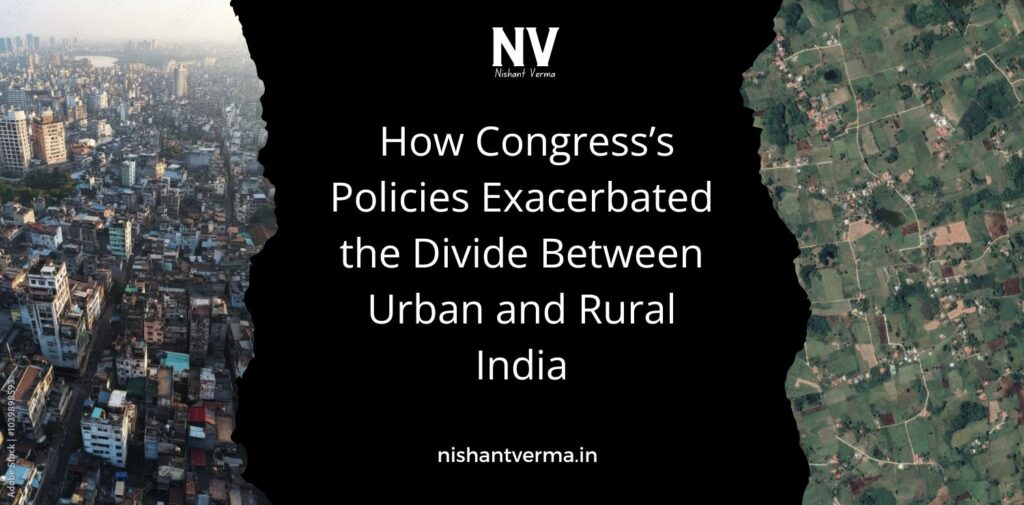India’s journey towards independence in 1947 was a monumental achievement, but it also laid the foundation for several economic, social, and political challenges. The Congress Party, which led the nation to freedom and governed for much of the post-independence era, played a crucial role in shaping the country’s policies. However, many of these policies inadvertently widened the gap between urban and rural India, creating disparities that persist today. The Congress Party’s approach to industrialization, agrarian reform, and the distribution of resources has been a subject of intense debate and criticism over the decades. This article explores how the Congress policies, while well-intentioned, led to the exacerbation of the urban-rural divide.
Focus on Industrialization
One of the key pillars of post-independence economic policy in India was industrialization. Under Jawaharlal Nehru, the first Prime Minister of independent India, the Congress government emphasized the development of large-scale industries as the engine of economic growth. The idea was to modernize the economy and make India self-sufficient in manufacturing. This vision led to the establishment of public sector enterprises, the development of heavy industries, and the creation of infrastructure like steel plants, power plants, and dams.
However, this industrialization drive was heavily concentrated in urban areas. Cities like Mumbai, Kolkata, Delhi, and Chennai became the hubs of industrial activity, attracting capital investment, skilled labor, and infrastructure development. As a result, urban areas received the lion’s share of resources and development, while rural areas remained largely untouched by the benefits of industrial growth. The imbalance between urban and rural India began to take root, as people from rural areas migrated to cities in search of better employment opportunities, straining urban infrastructure and resources.
This disproportionate focus on urban industrial growth created a dichotomy: rural areas, with their dependence on agriculture, lacked the infrastructure, services, and investments needed to improve productivity and quality of life. The rural economy remained primarily agrarian and stagnant, while the urban economy saw significant growth, leading to a widening income gap.

Agrarian Policies and Rural Development
The Congress Party’s policies regarding agriculture were a double-edged sword. While the government did introduce several land reforms aimed at reducing feudalistic control and redistributing land to the landless, these policies were often poorly implemented. The goal was to increase agricultural productivity and improve the living conditions of rural populations. However, many of these reforms failed to achieve their intended outcomes due to systemic issues such as bureaucratic inefficiency, lack of political will, and resistance from entrenched local elites.
The Green Revolution, initiated in the 1960s, is often cited as a major achievement of Congress policies. It aimed to boost food production through the introduction of high-yielding variety seeds, chemical fertilizers, and modern farming techniques. While the Green Revolution did increase food production, its benefits were unevenly distributed. The regions that benefited most were those with better irrigation facilities, infrastructure, and access to credit—primarily the richer, more developed states of Punjab, Haryana, and Western Uttar Pradesh. The poorer, rain-fed areas in the eastern and central parts of India were left out, and many small farmers could not afford the expensive inputs required for the Green Revolution, thereby increasing inequality within rural areas.
Additionally, land reforms in many regions were hindered by local power structures, which meant that the large landowners retained their dominance in agriculture. The failure of the Congress government to fully implement land redistribution led to a situation where large swaths of rural India continued to suffer from poverty, unemployment, and underdevelopment.

Neglect of Rural Infrastructure
Congress’s focus on urban development further exacerbated the urban-rural divide by neglecting rural infrastructure. While cities saw the construction of roads, bridges, schools, and hospitals, rural areas were often left without basic amenities. The rural population faced challenges like inadequate healthcare, poor educational institutions, lack of clean drinking water, and insufficient electricity. The rural-urban disparity in access to infrastructure and services only deepened during Congress’s long tenure in power.
One of the most visible consequences of this neglect was the inadequate road network in rural India. While urban areas saw better connectivity, rural areas, especially in remote parts of the country, remained isolated. This lack of infrastructure not only hampered rural development but also prevented farmers from accessing markets for their produce, thereby restricting their income potential.
In education, the Congress government’s emphasis on expanding urban universities and schools overshadowed the need to improve rural education. In many villages, schools were either non-existent or poorly equipped. This created a situation where the urban population had better access to quality education, which in turn contributed to their higher incomes and standard of living. The rural population, on the other hand, remained largely unskilled and undereducated, perpetuating the cycle of poverty.
Economic Planning and Centralized Policies
The Congress Party’s approach to economic planning, which emphasized centralization and state-led development, also had the effect of increasing the divide between urban and rural India. Nehru’s Five-Year Plans were designed to boost industrial growth and modernize the economy, but the emphasis on heavy industries and large-scale projects often came at the expense of rural needs.
The centralization of economic decision-making meant that a significant portion of resources was allocated to urban-centric projects. While some policies aimed at rural development, such as the Community Development Program, did have some success, they were often overshadowed by the larger emphasis on urban-centric industries. In many cases, the bureaucratic machinery in charge of rural development was inefficient, and corruption within local governance meant that resources rarely reached those in need.
The focus on centralized control also led to a lack of local autonomy, with rural communities having little say in how resources were distributed. This often resulted in policies that were ill-suited to the specific needs of rural areas and exacerbated the disconnect between rural populations and the policymaking process.

The Impact of Urban Bias in Governance
The Congress Party’s policies also reflected an urban bias in its governance. Urban areas, being the centers of political and economic power, received the lion’s share of attention from policymakers. With urban populations more likely to be educated and organized, they had a greater ability to influence the political process. This further cemented the focus on urban needs at the expense of rural concerns.
The urban elite, including politicians, bureaucrats, and businesspeople, often came from the cities, and their worldview was shaped by urban realities. Consequently, policies related to infrastructure, healthcare, and education were designed to cater to urban interests, often ignoring the distinct needs of rural populations. The lack of attention to rural areas left a sense of alienation and resentment among the rural populace, who felt left behind by the government.
Conclusion: Congress Policies
While Congress policies in post-independence India helped establish the framework for a modern economy, they also played a significant role in deepening the divide between urban and rural India. The focus on industrialization, urban development, and centralized planning, combined with the inefficiency in implementing rural reforms, created an uneven distribution of resources and opportunities. Rural India, which still depended largely on agriculture, remained underdeveloped, while urban areas became centers of economic growth and political power.
The divide between urban and rural India, exacerbated by Congress policies, continues to be a major challenge for the country. Despite the progress made in the last few decades, rural India still faces many of the same issues—poverty, lack of infrastructure, and limited access to education and healthcare. The Congress Party’s policies, therefore, not only shaped the trajectory of India’s development but also highlighted the deep structural imbalances that have persisted in the nation’s socio-economic fabric. To address these challenges, future governments will need to focus on inclusive policies that bridge the urban-rural divide and promote equitable development across the country.




